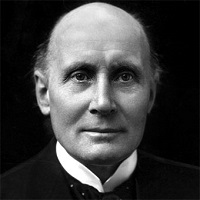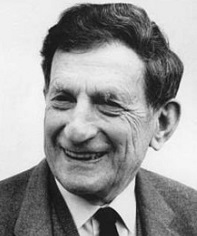|
TRANSLATE THIS ARTICLE
Integral World: Exploring Theories of Everything
An independent forum for a critical discussion of the integral philosophy of Ken Wilber
 Joe Corbett has been living in Shanghai and Beijing since 2001. He has taught at American and Chinese universities using the AQAL model as an analytical tool in Western Literature, Sociology and Anthropology, Environmental Science, and Communications. He has a BA in Philosophy and Religion as well as an MA in Interdisciplinary Social Science, and did his PhD work on modern and postmodern discourses of self-development, all at public universities in San Francisco and Los Angeles, California. He can be reached at [email protected]. Joe Corbett has been living in Shanghai and Beijing since 2001. He has taught at American and Chinese universities using the AQAL model as an analytical tool in Western Literature, Sociology and Anthropology, Environmental Science, and Communications. He has a BA in Philosophy and Religion as well as an MA in Interdisciplinary Social Science, and did his PhD work on modern and postmodern discourses of self-development, all at public universities in San Francisco and Los Angeles, California. He can be reached at [email protected].
SEE MORE ESSAYS WRITTEN BY JOE CORBETT Eros, or Spirit-in-Action, and the HolomovementWhitehead, Wilber, and BohmJoe Corbett
THAT is Eros, or Spirit-in-Action, the fundamental ontological process of Kosmic becoming.
The first thing that should be understood about the process philosophy of Alfred North Whitehead is that it was an attempt to create a metaphysics of reality appropriate to the scientific understandings of relativity and quantum theory. He sought to replace the Cartesian-Newtonian metaphysics of fixed and absolute space and time coordinates whereby objects like billiard balls interact, with a real-time (or phenomenological rather than abstract) moment to moment perspectival view of space-time in flux and flow, whereby subjects are in participatory relation.  Alfred North Whitehead Without going into the complicated terminology that Whitehead uses in his scheme, what he says is that each entity from the smallest to the largest arises as an occasion of the immediately preceding moment together with all the other entities in the local environment it is related to, ultimately extending to all entities in the non-local universe. In what is known as “panexperientialism” (or phenomenological ontology), Whitehead says that each entity “experiences” (prehension) each moment as a registered (informational) contrast to each previous moment, and in this way accumulates experiences into a habituated pattern of arising occasions. Since each moment is slightly different from the next due to the flux and flow of the nexus or concrescence of entities from moment to moment, ultimately each entity arises anew in a creative advance into novelty. The implication is that the very laws of the universe and the structure of space-time are emergent from moment to moment, and could very well be completely transformed over the long course of its continual advance into novel configurations. The initial appearance of the entities doesn't come from God or from nowhere, but from Creativity itself, a hypothesized transcendent order that quantum physics can hardly improve upon with its own notion of energy fluctuations from the quantum void as the hypothesized origin of the universe. Ken Wilber uses Whitehead's ontology as his metaphysical foundation for evolution, or Eros (spirit-in-action), the drive toward creative advance inherent in the universe. In a discussion on the interiors of agentic and altruistic (UL and LL) evolution, Wilber says:
“.... if I can focus on my version of the mechanism for this. It is an elaboration of Whitehead's view of ongoing experience, which he called “prehension” and I call “tetraprehension”—or a prehension simultaneously occurring in all four quadrants. Prehension was the term Whitehead used to mean proto-awareness or proto-feeling that's present in all phenomena, in all phenomena all the way down to quarks and strings and atoms.
Each moment arises as a subject of experience, a drop of awareness and, as it comes to be, it is aware of, or prehends, the previous moment. This previous moment, which was itself a subject, is thus made an object of the newly arising subject. The new subject feels the previous moment, thus including or enfolding it. It has its own make-up but then it also adds its own bit of novelty, or newness, to the previous moment. This newness is a creative movement, or a movement of “eros”, or whatever term one prefers.”[1] For Wilber, the creative advance into novelty inherent in the universe of arising occasions in concrescence within all four quadrants simultaneously, is the driving force of evolution, from the smallest to the largest entities, all the way down and all the way up the scales of manifestation.[2] One might say there is no way to avoid evolution as a ubiquitous process of accumulating experiences that creatively adds to the next from moment to moment as the universe unfolds and enfolds its occasions. THAT is Eros, or Spirit-in-Action, the fundamental ontological process of Kosmic becoming.  David Bohm Understandably, one of the criticisms of this point of view is its lack of concrete foundations demonstrable through scientific theory and evidence. However, this metaphysics is precisely what David Bohm describes as the holomovement, where moment to moment the cosmos flickers between the implicate and explicate order, enfolding the present moment into the implicate order and unfolding the next moment into the explicate order in a rapid transcend and include movement of undivided wholeness. The universe is in a constant state of flux and flow into a progressive accumulation and creative advance over previous states of its existence. THAT is the holomovement. The physical mechanism of this has been well established by quantum mechanics, which Bohm's theory is in agreement with mathematically and experimentally. The existence of all matter is mediated by virtual particle-antiparticle pairs, and virtual particles are themselves rapidly fluctuating in and out of existence from the subquantum realm of field probabilities, creating matter as the wave-crests on the surface of a vast ocean of underlying field-currents. This is how the unfoldment and enfoldment of physical reality occurs by the holomovement. In my own version of Kosmic evolution, the universe is a creative learning process from moment to moment, registering information from each occasion (via the virtual particle eyes-of-spirit, or dark energy) and accumulating memories in the Kosmic Unconscious (the akashic field of dark matter). Thence, the Kosmos responds to each new fluctuating moment of relational configurations with habitual stability, enabling it to self-organize amidst the encroaching chaos.
Since each moment is slightly different from the next due to the flux and flow of the nexus or concrescence of entities from moment to moment, ultimately each entity arises anew in a creative advance into novelty.
Crucially, in order for the universe to self-organize rather than merely repeat the same habits, or alternatively to veer off into haphazard novelty from moment to moment, the universe also possesses what Whitehead calls “eternal objects”, or pure potentials. These are the mathematical forms of the quantum potentials that make-up the underlying ocean of energy fields. In them are the potential for any new forms to arise, as anytime an entity is confronted with an occasion where it must change or shift its expression, it is to these eternal objects or underlying potentials that it turns (or is attracted to) for guidance in what to become, according to what it can become, in that particular occasion. In this way each entity does not simply repeat what came before or aimlessly go in one direction or the next, but is able to build upon experience in a creative way according to what is possible for it in each new occasion. I cannot say if this is truly how the universe works, no one can. But it is a start in the direction of seeing the universe in which we live as a larger version of the organism through which we live. As above so below, and as within so without. It's a fractally divided Kosmos all throughout its undividedness. NOTES[1] Commentary 8, Altruism and Integral Spirituality, “Steering toward the Omega Point: A Roundtable Discussion of Altruism, Evolution, and Spirituality”, evolution-institute.org, December 10, 2015. Based on a video presentation by Ken Wilber, which is linked to in this commentary. [2] As Whitehead himself says, “Biology is the study of the larger organisms; whereas physics is the study of the smaller organisms.”, Science and the Modern World, Chapter VI.
|